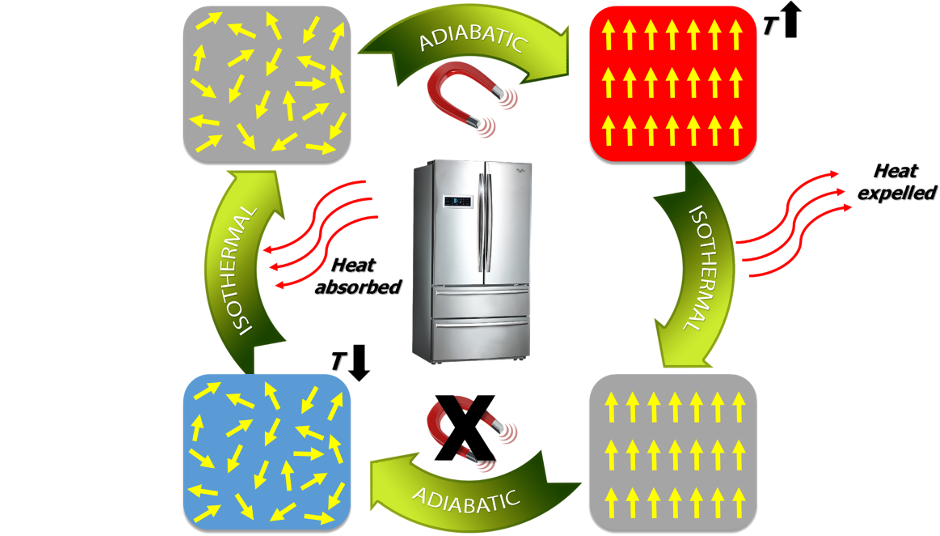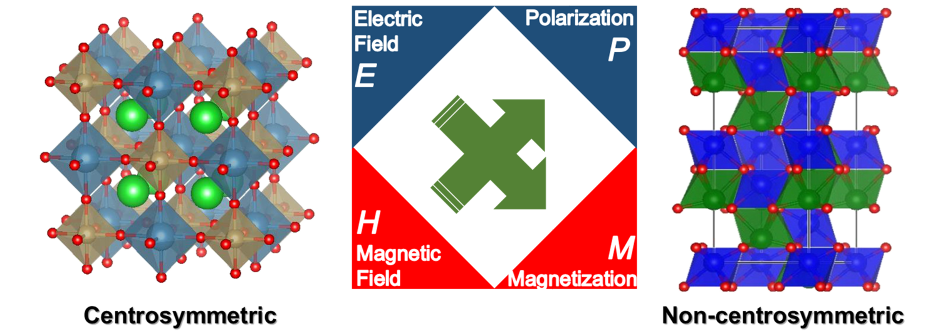Research
Magnetocalorics

The phenomenon of the magnetocaloric effect (MCE) is attributed to the temperature change of a magnetic material upon the application and removal of a magnetic field. Magnetic refrigeration has some advantages over the commercially available gas-compression refrigerators; one, it is economically beneficial and two, it is environmentally friendly. This refrigeration technology has been realized due to the discovery of Gd5Si2Ge2 which exhibits a large MCE and near-room temperature magnetic phase transition. The Thompson group will develop novel earth-abundant intermetallic compounds with an enhanced magnetocaloric effect.
Multiferroics

The magnetoelectric effect is ascribed to the induction of magnetic (electric) polarization by an applied external electric (magnetic) field, which can be used for data storage, sensors, and spintronics. The perovskite oxides are one of the most widely studied multiferroic materials based on their robust structure accommodating over 83% of the elements in the periodic table, thus fine tuning the multiferroic properties in this system is promising. Research in the Thompson group focuses on developing new polar perovskite-like materials that exhibit strong magnetoelectric coupling.
Thermoelectrics

The advent of new thermoelectric materials has led to the promising possibility of using thermoelectric refrigeration and power generation as an alternative to current technologies. Thermoelectric materials are solid state materials whose combination of thermal and electrical properties allows them to be used for the thermal to electrical energy conversion, and vice versa. The efficiency of any thermoelectric is determined by a dimensionless parameter ZT. In order for these materials to be used on a large scale and in home refrigeration, thermoelectric materials with ZT ≈ 4 are required. In the Thompson group, we look to synthesize novel thermoelectric materials using a variety of synthetic methods.